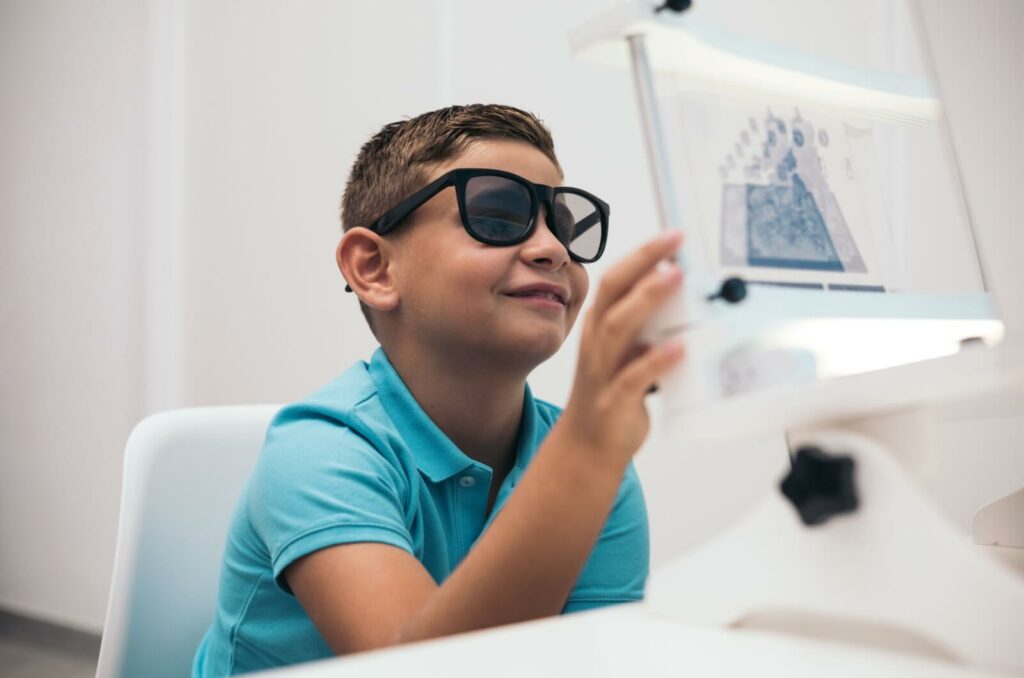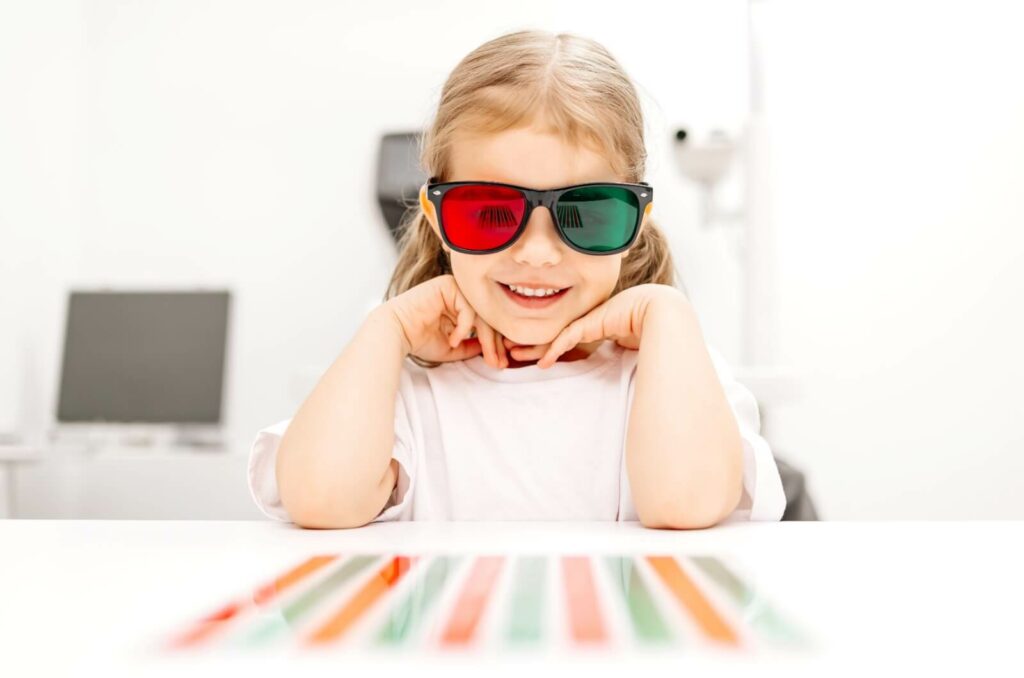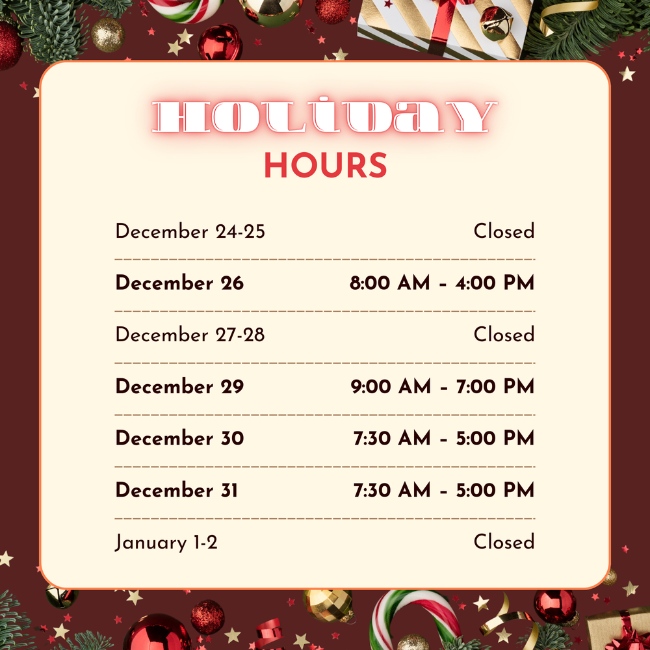The world of ocular care isn’t limited to updating corrective lenses. One of the ways we provide specialty eye care to improve and maintain good ocular health and vision is through vision therapy.
Vision therapy is a helpful and non-invasive approach that aims to improve various visual skills through exercises and activities, including:
- Accommodation
- Eye tracking
- Focus adjustment
- Eye coordination
This is done by strengthening brain-eye communication and teaching the eyes how to work together more efficiently.
All About Vision Therapy
Vision therapy isn’t about building and strengthening eye muscles. Rather, it’s a specialized program aiming to improve visual skills and processing by targeting brain-eye communication and teaching the eyes how to work more efficiently.
Humans have binocular vision, meaning our two eyes are meant to work together. Each eye holds slightly different pieces of visual information. Visual therapy helps correct any problems in binocular vision by improving visual skills and teaching the eyes to work together.
Vision therapy works based on the concept that vision is a learned skill, like riding a bike or playing an instrument, rather than innate. This approach allows the therapy to address visual deficiencies that can be overcome by learning, allowing an individual to improve their visual skills.
Vision therapy works by harnessing the brain’s ability to form new neural connections, known as neuroplasticity. Optometrists specialized in this area of ocular care design exercises that target specific visual functions to refine these skills.
Through repetitive practice and gradually challenging tasks, therapy rewires the brain-eye connection, making it more efficient. This approach is effective because vision is dynamic, meaning it’s not just about seeing, but also about interpreting and responding to what is seen.
During visual therapy, visual exercises are used to target the brain’s ability to communicate with our eyes by realigning and strengthening ocular muscles by focusing on:
- Ocular motility
- Accommodation
- Binocularity
- Depth perception
- Eye tracking
- Focus adjustment
- Eye coordination
There are many basic visual skills beyond sharp vision that are necessary for maintaining good ocular health and vision. A problem with any of these visual skills can impact one’s quality of life. This is especially true for children, who require these skills for their learning and development.
Many visual problems stem from a lack of development in these areas, and affect daily activities like reading, writing, focusing, and playing sports.
Ideally, visual therapy aims to enhance visual efficiency, by improving the patient’s ability to focus, track, and process visual information.
Is Vision Therapy for Everyone?
Vision therapy isn’t necessary for everyone. Rather, it’s beneficial for those experiencing visual challenges that impact their daily activities, including:
- Learning difficulties related to vision
- Sports performance
- Developmental delays
While vision therapy is commonly associated with children, it’s not an age-restricted program. Adults struggling with specific visual tasks can benefit too. However, it’s better to start this program sooner rather than later to reap its full benefits.
Common symptoms to look for that may indicate a need for vision therapy include:
- Frequent headaches or eye strain after reading
- Difficulty maintaining focus or attention
- Trouble with hand-eye coordination
- Skipping lines or losing place while reading
- Double vision or blurry vision
Some of the ocular conditions and visual concerns that this therapy can help target include:
- Eye strain
- Double vision
- Strabismus (Crossed eyes)
- Amblyopia (Lazy eye)
- Convergence insufficiency (eye teaming)
- Traumatic brain injury (concussion)

What to Expect During Vision Therapy
It’s difficult to break down exactly what visual therapy entails because each session is uniquely tailored to address the specific visual concerns of the patient. No two sessions are the same, as optometrists adjust exercises and activities to target individual patients’ progress and challenges.
The duration of a vision therapy program varies based on individual needs.
A typical program might last between three to six months, with regular sessions each week. Vision therapy isn’t meant to be ongoing. Instead, it continues until significant improvements are achieved and maintained.
These sessions focus on using exercises and activities to hone and improve basic visual skills as well as tools to help create an engaging experience:
- Prism lenses help to alter visual perception and improve eye coordination.
- Filters and patches for eye exercises to enhance focus and tracking.
- Digital software and apps that provide interactive visual tasks.
- 3D activities to develop depth perception and spatial awareness.
Some of these visual exercises can be practiced at home, but at home training isn’t a substitute for professional therapy offered by an optometrist or vision therapist who can provide additional guidance, monitor progress, and adjust exercises as a patient progresses.
Vision Exercises to Try at Home
Home exercises are encouraged, but these are meant to complement in-clinic sessions.
By practicing exercises regularly, patients can maintain progress and continue improving their visual abilities:
- Pencil push-ups: Improve convergence by focusing on a slowly approaching pencil. Bring the pencil as close to the nose as possible without losing focus, then slowly move it away.
- Eye Tracking: Follow a moving object with your eyes without moving your head. This can be done with a finger, a pen, or a small ball.
- Figure Eight: Imagine a large figure eight on its side (an infinity symbol) and trace it with your eyes. This helps with eye movement control.
- Near and Far Focus: Focus on an object close to you, then quickly switch to an object farther away. This helps improve focus flexibility.
- Peripheral Vision: Practice noticing objects in your peripheral vision while focusing on a central point.
Schedule a Consultation
Vision therapy focuses on strengthening basic visual skills by stimulating brain-eye connection. Not everyone requires this specialized therapy. Consulting with your optometrist helps determine whether someone is a suitable candidate.
Connect with our team at Verona Vision Care to schedule a vision therapy consultation.




